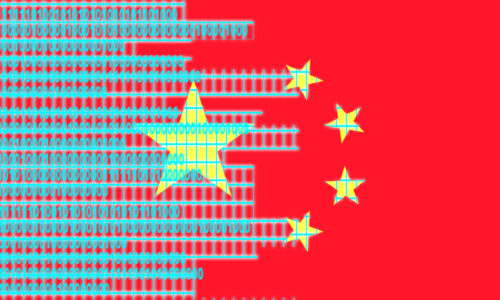Did this year’s 618 ecommerce festival pull China out of its consumer slump?
Overall growth rates this year are more muted than in the past, but underlying trends point to changes in consumption patterns in the near future.

China’s second-largest shopping festival wrapped up at a critical time over the weekend, carrying hopes that domestic consumption may gradually recover as China begins to re-emerge from mass pandemic prevention and control measures that have restricted the movement of residents and logistics for the past three months.
But this year’s 618 festival, initiated by ecommerce retailer JD.com 京东集团 in 2004, posted results that were not overly encouraging: JD.com reported that, during the promotional period (from the evening of May 31 to midnight on June 18), cumulative sales on its platforms exceeded 379.3 billion yuan ($56.67 billion), representing a year-on-year growth rate of 10.3%, a large drop from the 27.7% growth in the same period last year and significantly lower than in previous years.
Some areas grew more than others, however. Initial indications of this year’s 618 sales reveal which products were popular, and point to consumer trends for the rest of the year.
One area that achieved strong growth in this year’s 618 was home and office appliances.
- Sales of home appliances such as air fryers, sweeping robots, and smart projectors on JD.com increased by more than 10 times year-on-year, while sales of fragrances and makeup, outdoor sports equipment, and men’s clothing all increased by more than three times year-on-year.
- Roborock 石头世纪科技, a manufacturer of robot vacuum cleaners, reported sales of around 100,000 sweeping robots during 618, exceeding the sales of last year’s 618 festival.
- Retailer Suning.com 苏宁易购, with an ecommerce platform and 10,000 stores across China, reported an increase of 182% in sales of high-end home appliances.
JD.com’s investment in recent years in “instant retail services” paid off in this year’s 618. By the start of the 618 period, JD.com had partnered with 150,000 offline stores across China to provide instant retail services, encompassing all retail categories, to consumers in more than 1,700 counties, districts and cities.
- The transaction volume on JD.com’s “Hour Shopping” platform (Jīngdōng Xiǎoshígòu 京东小时购) which allows customers to buy products online from brick and mortar stores via rapid delivery; and “Home” platform (Jīngdōng Dàojiā 京东到家) which provides rapid delivery of products from local supermarkets and other partners, increased by 77% year-on-year over the 618 period.
- On June 18, the single-day transaction volume on these two platforms exceeded 600 million yuan ($89.64 million), a new daily record. During the 618 period, the number of users who placed orders through JD.com’s Hour Shopping increased by more than 400% year-on-year.
- Sales of fast-moving consumer goods on JD.com’s platforms reached historic highs, of which the sales of beverages increased by 184% year-on-year, and the sales of maternal and infant products increased by 100% year-on-year.
The context
Despite JD.com’s smart bets to speed up its shopping experience, total retail sales of consumer goods in China are still decreasing: From March to May this year, total retail sales of consumer goods nationwide dropped by 3.5%, 11.1%, and 6.7% year-on-year, respectively.
The 618 ecommerce festival will undoubtedly provide a fillip to retail sales in June, and support consumption and economic growth during the rest of the year. JD.com and other retailers are determined to make ecommerce faster and more convenient, and have provided a large scope for refunds. For this year’s 618, JD.com, Alibaba’s 阿里巴巴集团 Tmall 天猫, and other ecommerce platforms have launched support policies for merchants, including financial subsidies, supply guarantees, and technology upgrades to reduce pressure on merchants.
The takeaway
Overall annual growth rates of this year’s 618 festival were not as high as in previous years, and this may to some extent be related to the pandemic and prevention measures that occurred this year. But consumption patterns are also changing of their own accord in China: Low-cost consumption is no longer the only or preferred option; consumers are demanding a much greater diversity of products and after-sales services, and a more convenient (and faster) ecommerce experience. All this means that it is becoming less and less likely that China will reproduce the spectacular growth rates of retail sales of years past, and the impact on driving consumption and economic growth will likely also be more measured.






